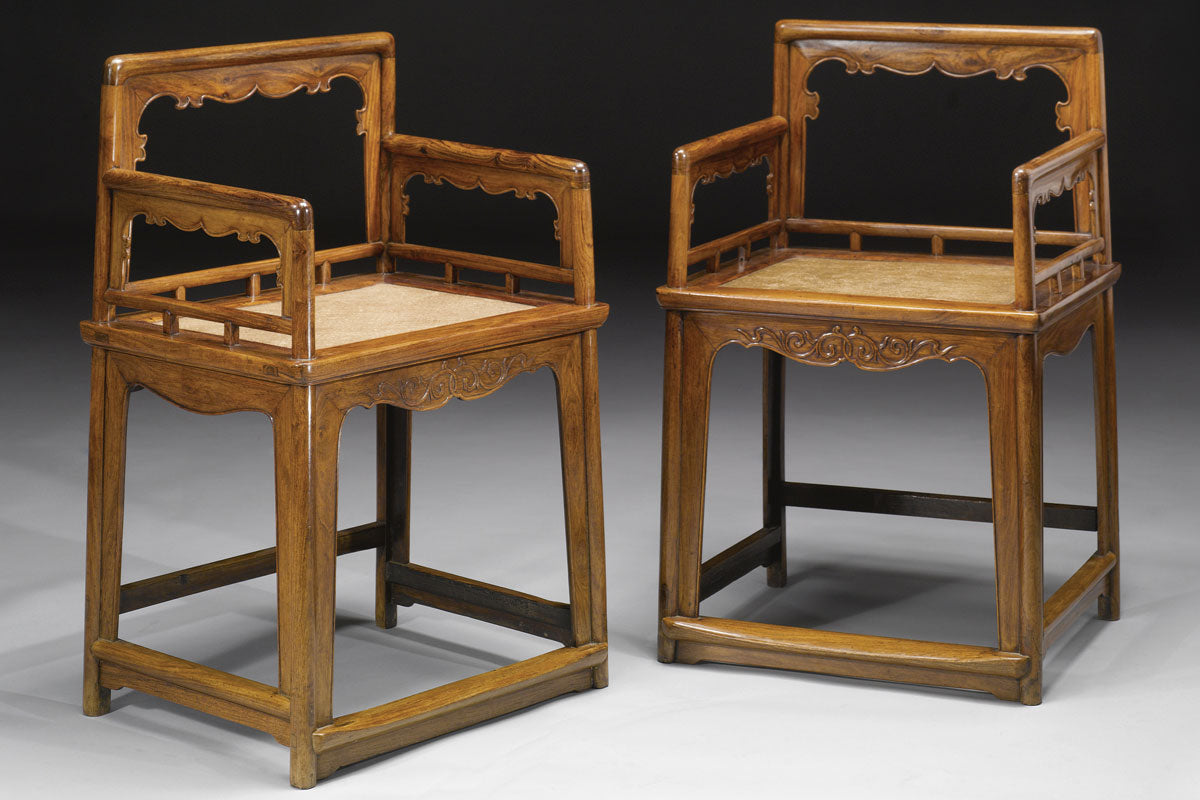
Record prices for Chinese pieces at auction
It is fair to say that we are big fans of antique furniture and ceramics here at Shimu, and although we have some hard to find pieces, nothing in quite the same league as some of the items we have spotted at auction in the last few months.
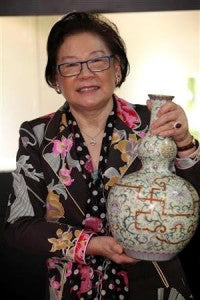
|
Chinese antiques, although always popular, really do seem to be having a moment. The value of rare pieces is going stratospheric, in part down to wealthy Chinese collectors looking for investments. In the past decade, a wave of wealthy Chinese have entered the market. Many focus on the Qing period, with an emphasis on the reign of the great Qianlong emperor from 1735 to 1796. This is where some of the most stunning prices have been made, such as the famille-rose double-gourd vase that sold to the Hong Kong-based collector Alice Cheng (shown left with the vase) in 2010 at Sotheby’s, for $32m (which represents a staggering £20m). “For Chinese looking for investment potential, the Qing market offers volume, and the fact that these pieces have age, and were difficult to make adds to their appeal,” says Patti Wong, the chairman of Sotheby’s Asia. |
“The word ‘investment’ is crucial among mainlanders”, says Kate Bryan of London’s Fine Art Society and previously of the Cat Street Gallery in Hong Kong. “With people from Hong Kong, you can talk about the art, but with mainlanders the conversation is all about the investment potential.”
Interestingly, Chinese buyers often shun earlier works, but this is also changing, with a great deal of interest in Ming and Song works, and a growing market in archaic bronzes, jadeite carvings and huanghuali and zitan furniture, as well as textiles and Buddhist sculpture.
At Shimu, we are particular fans of huanghuali furniture. Huanghuali is literally translated as ‘yellow flowering pear’ wood and is a member of the rosewood family. The finest huanghuali has a translucent shimmering surface, with abstract patterns clearly visible in the grain – traditionally, those appearing like ghost faces were highly prized. In colour, hunaghuali ranges from reddish-brown to golden-yellow.
|
It is believed that there are less than 10,000 pieces of huanghuali furniture left in the world. Because the wood is nearing extinction, and is now a protected species, supply is very limited. Matched with the rapidly increasing demand for Chinese antiques, prices for huanghuali furniture have skyrocketed over the past five years. Recent huanghuali pieces sold at auction include a Ming dynasty chair which went for $9.3 million, and the exquisite bed pictured right at almost $7 million. Huanghuali was recently recognized by the National Museum of China as worthy of more attention, and given its own display alongside the museum’s more celebrated ancient bronzes, paintings and porcelain. |
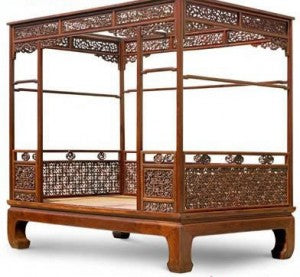 |
The exhibit has assembled some stunning pieces, such as a late Ming geshan, or paneled screen room divider, as well as a Ming dynasty mirror stand with screens and a carved kirin dragon motif (visit the museum’s website here.)
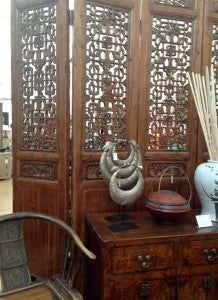
|
The interest in the West in Chinese furniture has certainly played a role in building a new following in Asia, according to people in the business, but the market is more reliant on a Chinese audience. “Chinese are the key players in collecting and showing Chinese furniture these days,” said Feng Langquan, an agent in the classical furniture business. “But both Westerners and Chinese enjoy the beauty of huanghuali.” We have no huanghuali in our collection but we do have this huge, exquisite carved antique screen (left), made from the panels that would once have formed an interior dividing wall in a wealthy Chinese home. Each panel is inset with beautiful relief carvings of flowers and figures from Chinese legend. |
As is the case with antique huanghuali or zitan furniture, it is currently impossible to ship this type of piece from China due to an export ban, and for the time being at least the screen is not for sale. However we do have many other amazing antiques on display in the showroom and available for purchase online. They include this pair of elm wood yoke back chairs from Shanxi circa 1880 and this beautiful black cabinet dated around 1800 decorated in green and red with peacocks and dragons (both shown below).
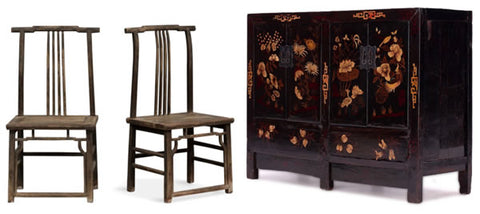
|
If you want to chat about oriental antiques then please do get in touch. I’ll be making another of my regular trips to China later this week and can source pieces at your request, so please just ask. Discovering an extra-special antique is quite a thrill and one of the best bits of the job, so I’d be delighted to help! |





Leave a comment